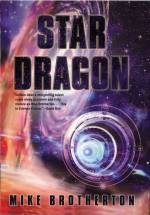Search
Science Fiction in the Age of Exoplanet Discovery
October 17th, 2012
From discovering the new planet in the Alpha Centauri system, to the “diamond planet,” to “Tatooine,” this is an exiting time in astronomy. We’re finding planets orbiting stars beyond our own solar system in ever increasing numbers and with ever increasing diversity. When I started graduate school to get my PhD, we didn’t know of any so-called exoplanets at all, and it was still an outstanding question if other star systems were even commonplace. We thought it likely, but we didn’t know it was likely…
Now we do.
This is an age of opportunity and peril for science fiction creators.
The opportunities are obvious. You can pick a star and pick a planet and look up their properties and write away with some confidence your speculation is based on solid ground. You can know that some planets really do have very elliptical orbits, unlike Earth’s orbit. You can know that some gas giants live in the inner parts of their solar system and that their moons can exist inside the Goldilock’s zone where liquid water can exist on their surfaces. You can know a lot of things for the first time when it comes to worlds beyond the local neighborhood.
What are the perils?
Well, due to the limitations of our current technology, we’re only finding a fraction of the systems out there, and some stories may require worlds around stars where we haven’t found anything…yet. The yet is the problem. You write about planets around a specific star now, and in a few years we may have shown that they’re there, but totally different than written about.
Let me provide some guidelines that may be of use.
If you don’t need to, don’t be specific about your star system. Let the colonists or aliens there have their own name for a star that is different from the name 21st century astronomers use (likely an ugly catalog name anyway). You’ll never get called out.
If you do pick a specific star, check an online catalog (here’s one of many) to see if we already know whether or not planets exist there and what their properties are. Being specific means research is needed.
Keep in mind that the planets discovered around other stars may not be the only ones in those systems. More may be found in the future. We generally need to observe for several orbital periods to be sure we have something, and Neptune has only recently made a single orbit since it was discovered over a century ago. You can also invent planets to add to existing systems as long as you conform to the laws of physics (and a few other issues — see below).
If a system is found to have a “hot Jupiter” — a gas giant in a very close orbit to it’s sun, that planet has likely migrated there and consumed any smaller terrestrial worlds in the inner system already. Probably not a system for inhabitable worlds.
Binary stars are fair game, as we’ve found planets in orbit around both close pairs and orbiting single stars that are part of widely separated binary systems.
There are literally billions and billions of stars out there, with no shortage to choose from, and no way we’re going to be anywhere close to knowing what their planetary systems are like any time soon. We’re only managing to find things around about 1000 stars so far, which is quite far short of a billion.
If you do pick a relatively nearby, older F, G, or K star that could plausibly have an Earth-like planet in an Earth-like orbit with time enough to have evolved life and an alien civilization (e.g. popular candidates are Alpha Centauri, Epsilon Eridani, Tau Ceti, etc.), know that they are being scrutinized astronomers and are risky in some ways. I’d be surprised if they didn’t all have planetary systems, but damned if I’d put my money on what they’re like.
Be cautious when you hear wild, crazy, and detailed things about specific exoplanets. That “diamond planet” isn’t a single giant diamond, and while it might have a lot of diamonds, it might not. There’s a lot of speculation (even “science fiction”) going on in astronomical journals under the name “theory” that should be taken with a grain of salt (or a very small diamond) until verified with observation. It may be a cool launch point for a story, but could also be overturned by future observations or competing theories win out over old ones.
Finally, sometimes you just got to write the stories you got to write. Science fiction stories involving the future and speculation are always risky. Plenty of great ones about Mars (War of the Worlds by H.G. Wells) and Venus (“All Summer in a Day” by Ray Bradbury) that remain great stories despite science removing their plausibility. That’s sure to be the case with planets in other star systems, too.
Still, if we had failed to find planets around any binary stars whatsoever and had come to the conclusion that they didn’t exist, part of me does suspect that George Lucas would erase one of the stars in the sky in that scene in Star Wars.
You can follow any responses to this entry through the RSS 2.0 feed. You can skip to the end and leave a response. Pinging is currently not allowed.


I’m pretty interested to see a story about the diamond planet. I’m too lazy to figure out what walking around on it would be like, but I really want someone else to put the energy into it. Lot of different ways the story could go.
I think probably the best part about the age of exoplanets is it helps stimulate the imagination. There are new ideas of weird planets and solar systems being offered to us every week it seems like. Take one and run with it.
What about dodging the issue entirely? How far out do you have to be to plausibly have a currently undiscovered yellow dwarf? 50 light years?
If we’re talking sun-like main sequence stars (e.g. G V) probably quite a bit further than that. Avoid the Kepler search area is also a good idea. On the other hand…any sunlike stars that have been surveyed over the last 10-20 years and not found to have planets are ideally perfect. The planets could be there, but the system would be far from edge-on to us and it’s going to be a long time before we can find those suckers.